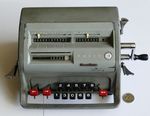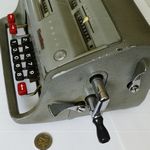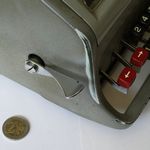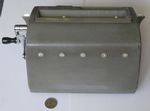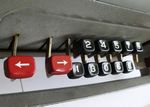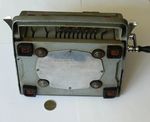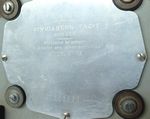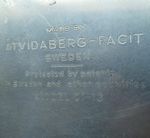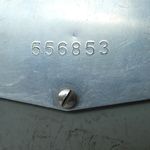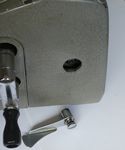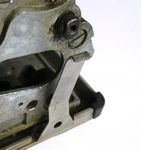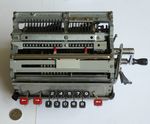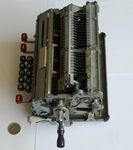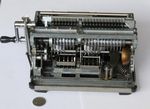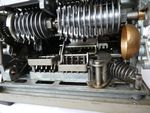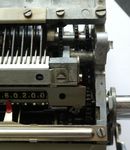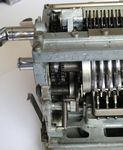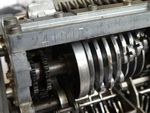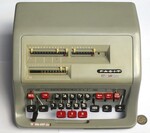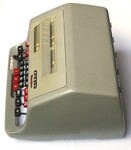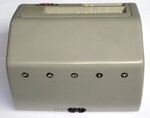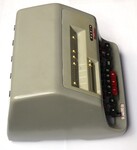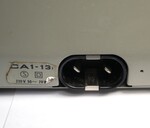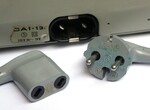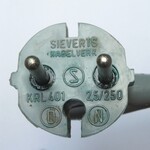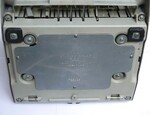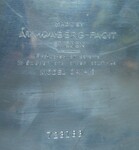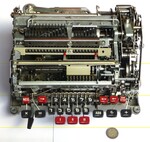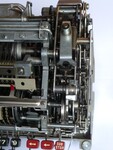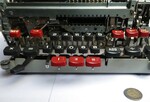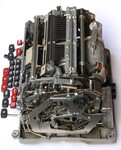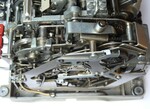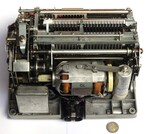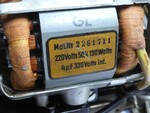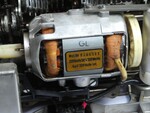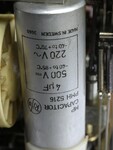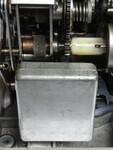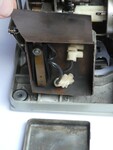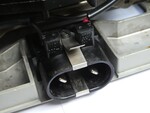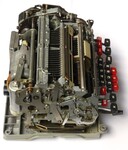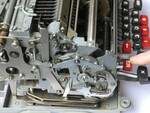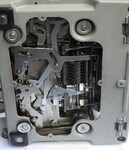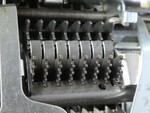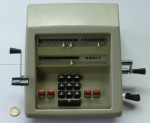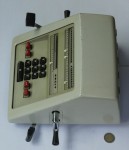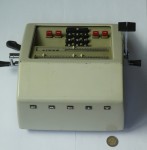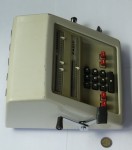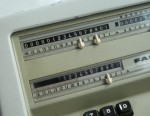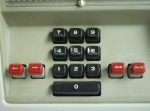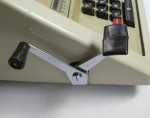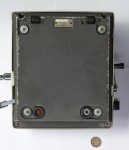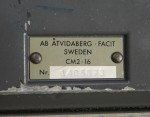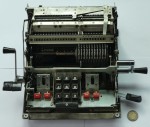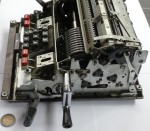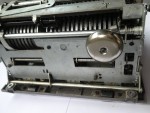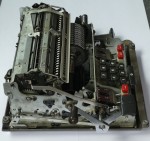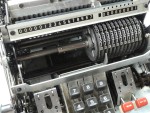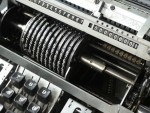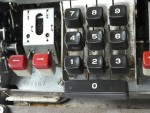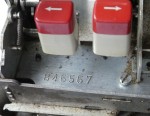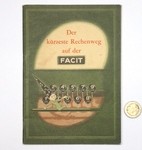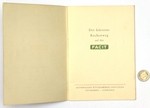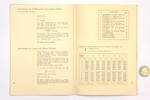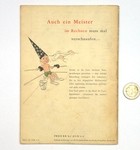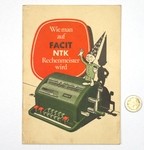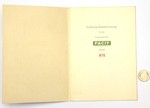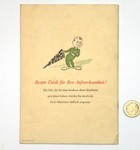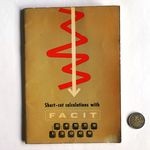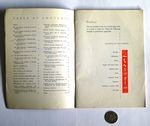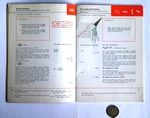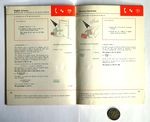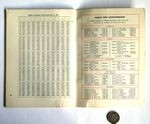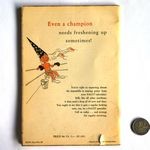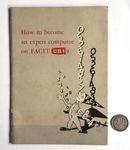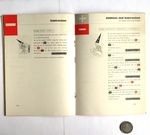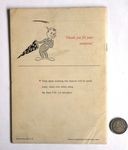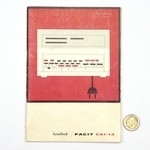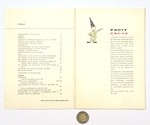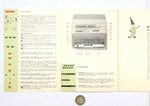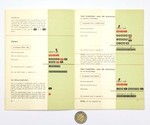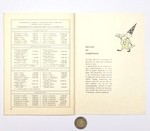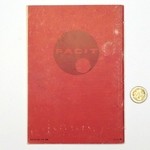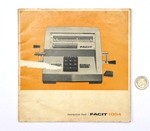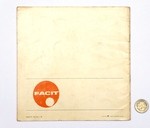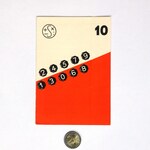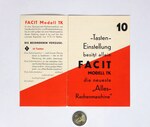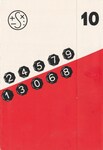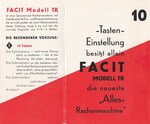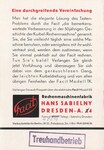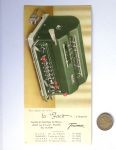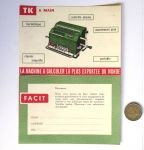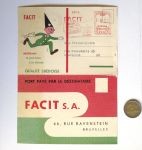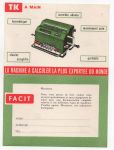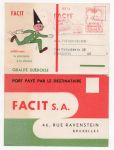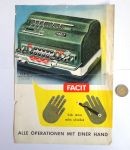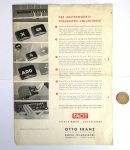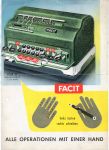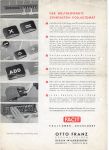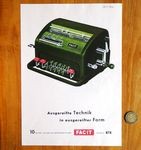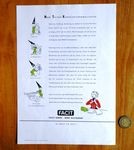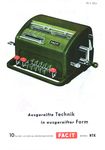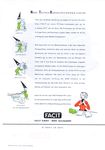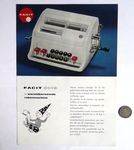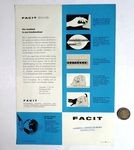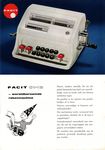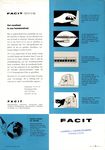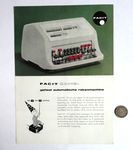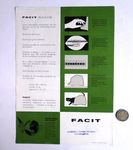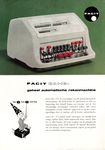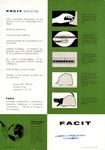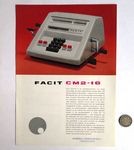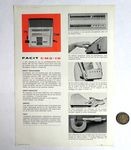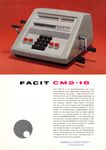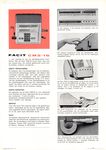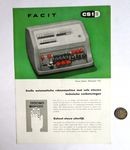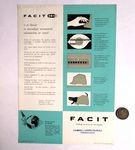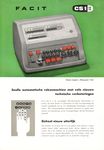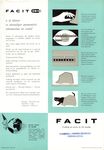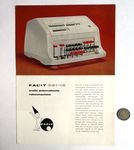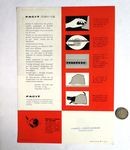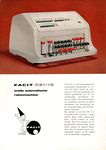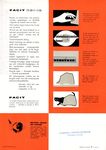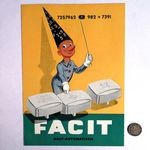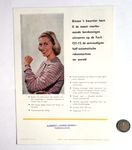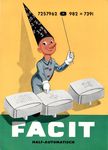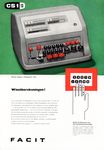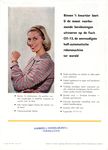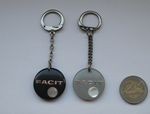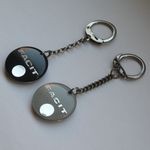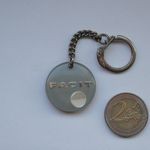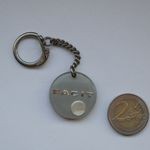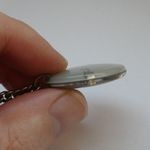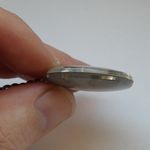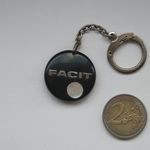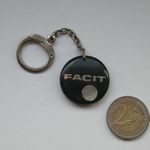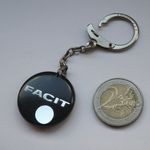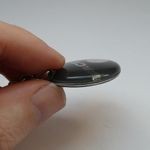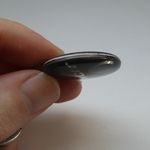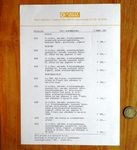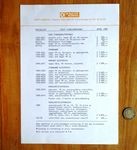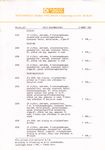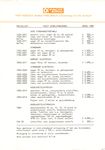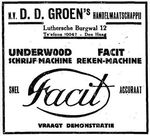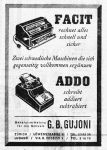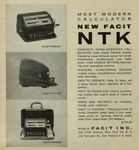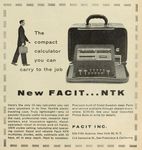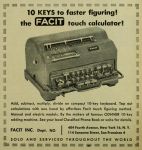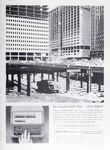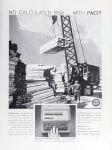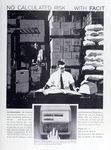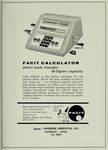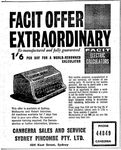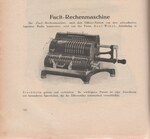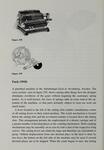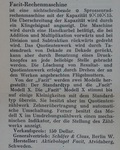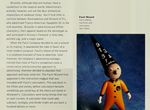
One of our Granasat students has managed to repair the wonderful calculator that everyone in his time wanted to have.
To do this, he had to dismantle it and find out the fault in its mechanism.
Below is the innards of Facit C1-13
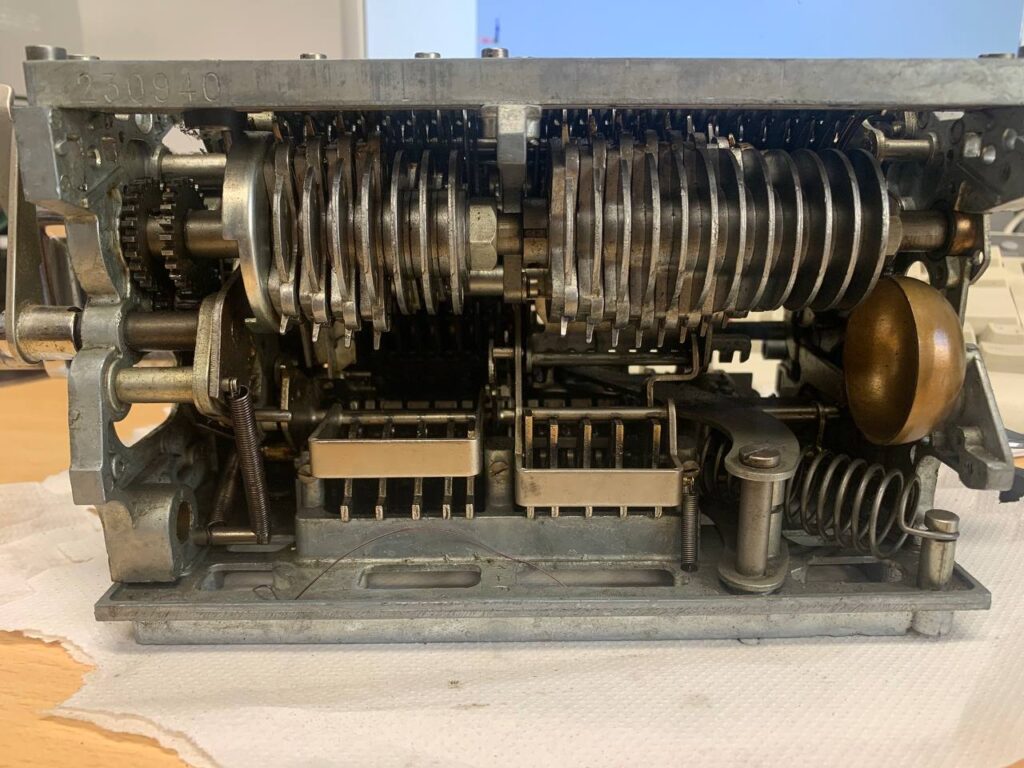
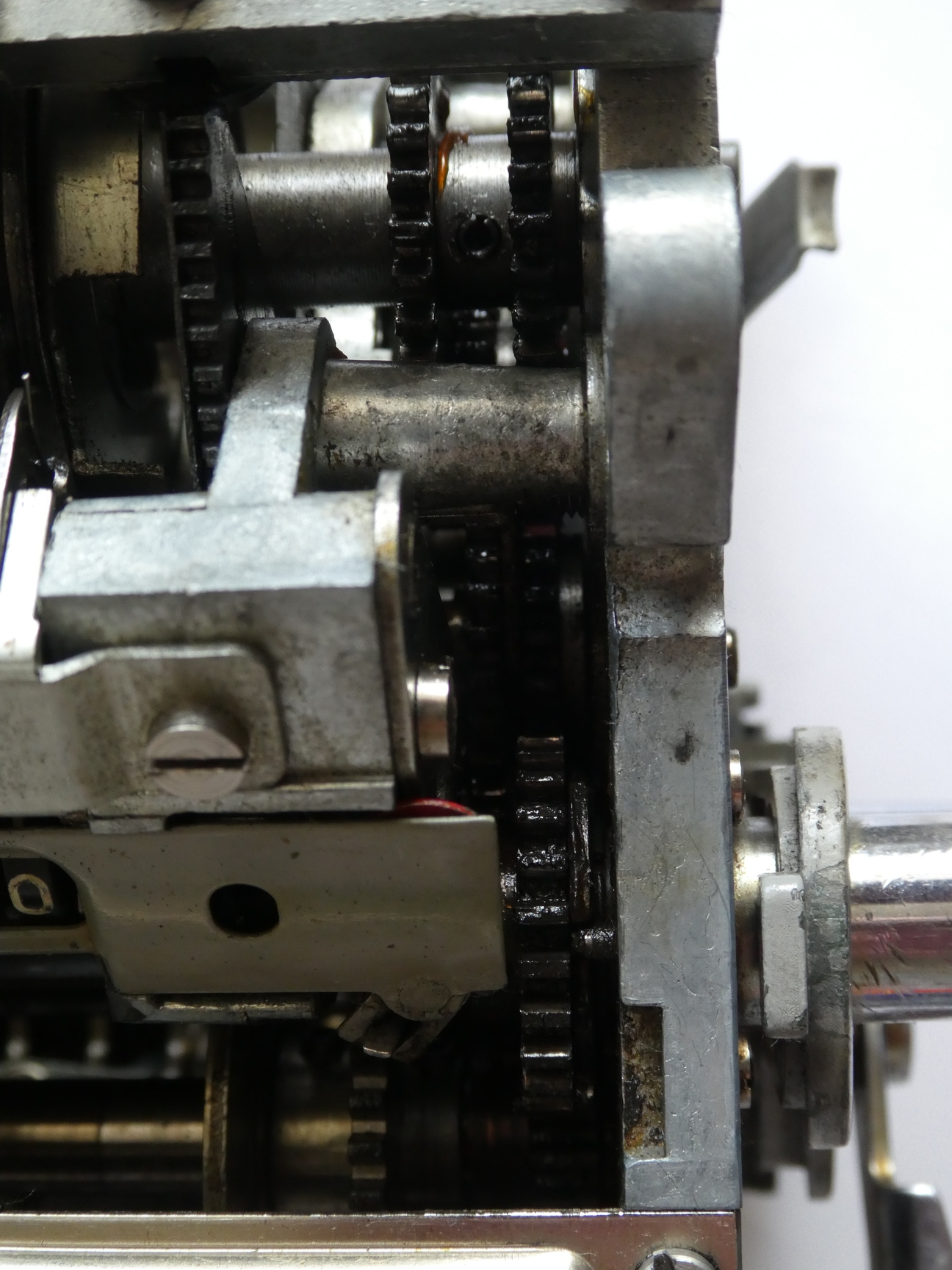
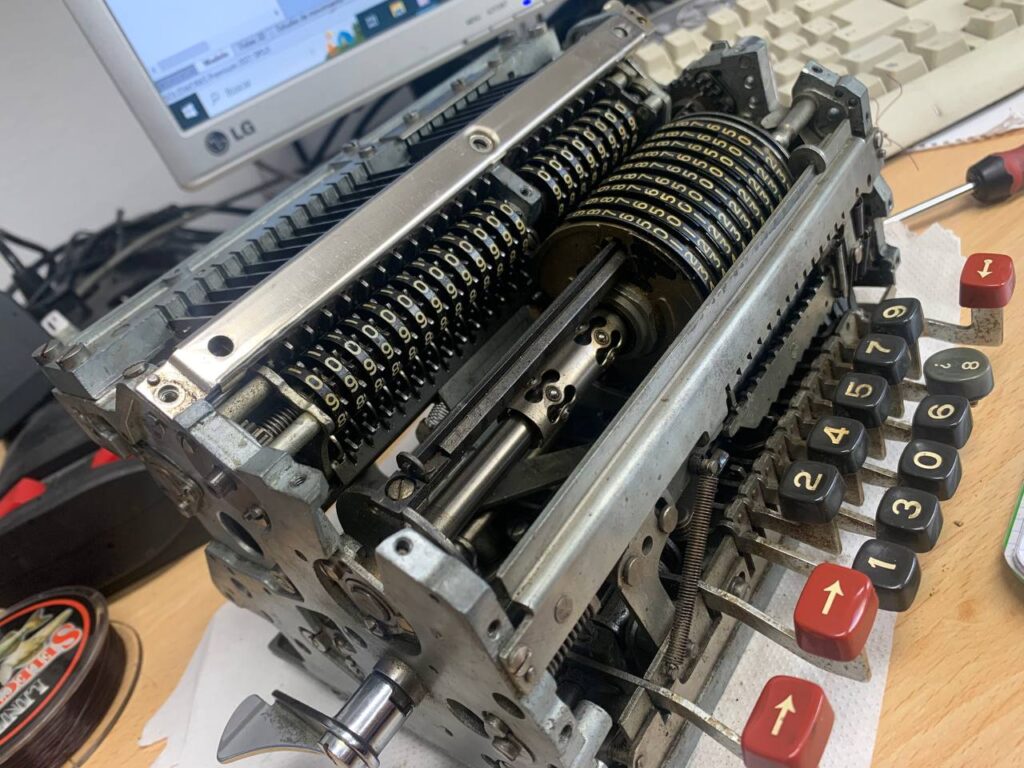
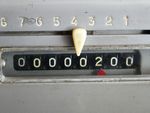
Our student: Manuel Fernandez Bailon, had to disassemble and find the failure of this machine.
facit-ntk-manual-compressed1-3After disassembling and a long morning he realized that the mechanism that activated the numbers didn’t fit as it should, so he fixed the mechanism and…Eureca¡ The numbers already worked, but not in the way they should, when you activate(for example) the number 5, the number 0 was selected, after observing carefully he realized that the gear that made them rise to their place was not correct, he fixed it and finally the machine was working perfectly (or so I thought).
After testing it, he realized that the cranks used to clear the counters were not turning as they should. He looked at them carefully and realized that the gears were dirty and rusty, he cleaned and greased them and now, the Facit c1-13 calculator is back to dazzle us with its wonderful mechanism that solves all our operations.
facit-tkBut one more problem would appear for our student….
The support that acts as legs for the machine was broken and non-existent, therefore, he designed some new and beautiful supports, and here is the process of designing each of the parts and their assembly:



Here the final result


Explaining video about the calculator
The following information has been obtained from this page
https://www.jaapsch.net/mechcalc/facit.htm#facitc1
Facit
Facit AB was a Swedish company founded in Stockholm in 1918 that made mechanical calculators. The calculators were designed by Karl Viktor Rudin, based on the classic Odhner pinwheel design. In 1922 Facit AB was bought by AB Åtvidabergs Industrier, a company based in the municipality Åtvidaberg which made office furniture and supplies. They made various high quality pinwheel calculators until in 1932 they made their first 10-key calculator, again designed by Rudin. It was named the Facit model T and became very successful. It was so successful that they continued to make variations of this design, including electrically driven versions, for the next four decades.
In the late 1960s they made a deal with the Japanese company Sharp to make desk calculators using Sharp’s electronics. However, in the early 1970s the appearance of handheld electronic calculators made mechanical calculators obsolete, and Facit AB was unable to change quickly enough, and was bought in 1973 by Elektrolux.
The Facit C1-13
The model C1-13 is mechanically very similar to their first Model T 10-key calculator from 1932, but with a more modern exterior design by Sigvard Bernadotte.
The main register at the top left has 13 digits, the revolution counter at the top right has 8 digits, and the input register at the bottom left has 9 digits. Each of these is cleared by one of the three levers on the side of the machine. It has a number of clever innovations that set it apart from other pinwheel calculators:
- Moving input register. In most other rotary calculators, the register and counter are on a movable carriage, and they move relative to the stationary input register that the user sets by moving pins. On the Facit it is the input register that moves, while the Main register and counter remain stationary. This keeps the machine compact, because the moving carriage is entirely internal, inside the case.
- Ten-Key input. The moving input register carriage allows the user to input the numbers via a 10-key keyboard. Each time a key is pressed, one pinwheel is set to the chosen digit, and the input register is moved to the left. In this way the chosen number is visibly built up in the input window in way that is very similar to electronic calculators. Note also that each pinwheel that comes into view is locked into place and can no longer change value. On traditional pinwheel machines the crank handle keeps a long rod pushed in that releases the pinwheels for input, but such a locking mechanism is unnecessary here.
- Automatic subtraction/division selection. Another neat trick is that there is no switch to choose between addition/multiplication and subtraction/division. Such a switch is present on the Walther and the Curta, and sets the direction in which the revolution counter should move, i.e. whether it should count additions or subtractions. On the Facit, if the first turn of the crank is a subtraction (i.e. counter-clockwise) then it automatically switches to subtraction/division mode, and the revolution counter will display 1 and a red dot will appear next to it.
The engraved plate on the bottom of the machine bears the serial number 556,853. The first C1-13 had serial number 550,001 and was made in 1957, and my machine must have been made later in that year. It still has a round Åtvidaberg button on the front and on the back separated letters spelling out FACIT. It also has a logo from Blikman & Sartorius, who were a Dutch office supplies company who were the main Facit importer in the Netherlands. From 1957 to 1969, about 20,000-30,000 were made every year, for a total of about 315,000.
The casing can easily be removed. First unscrew two of the small levers. The casing is held in place by metal clips that hook into the holes for the two removed levers. Simply push in the clips and the casing comes free.
There are two further noteworthy innovations:
- Bi-directional pinwheels. When a digit from 1 to 4 is chosen, the pinwheel is rotated downwards a corresponding number of steps, which causes the same number of pins to be extended. If keys 5 to 9 were to turn the pinwheel even further, the keys would need a large amount of travel, or be much harder to press compared to the keys for the smaller digits. To avoid this, keys 5 to 9 move the pinwheel in the upwards direction 1 to 5 steps. The first step causes a single part with 5 pins to be extended, and the next steps extend the same four individual pins as before. A similar idea is used in the Monroe, where a single part supplies 5 gear teeth, though its implementation is very different.
- Carrying mechanism on a separate axle. The registers are kept simple and compact by separating out the carrying mechanism. A separate axle contains pins which are shifted to the side by any number wheels that overflowed and which then engage with the next number wheel to perform the carry. This axle moves in tandem with the axle containing the input pinwheels. This is also something that is used in the Monroe calculator, but in that machine the moving carriage means that carries cannot be performed on the left-most digits when the carriage has moved to the left. Having a stationary register and counter avoids this problem. The C1-19 did have a moving carriage for the register and counter, but its carrying mechanism was completely revamped so as to avoid the problem.
The serial number that is engraved on the internal frame is 241,517.
Video
https://www.youtube-nocookie.com/embed/zJ3q4zjCKnM
The Facit CA1-13
The model CA1-13 is an electric fully automatic calculator. It is similar in design to the C1-13, and its three visible registers have the same capacity. It also has an internal register that stores one of the factors when using automatic multiplication.
In most general use, the lever at the front left is in its leftmost position. In this mode, the buttons have the following functions:
- Number keys: For entering a number in the input register (and usually the internal register)
- ADD: Add the input to the register, increment the counter, clear the input
- +: Repeatedly ADD without clearing the input, then shift the input to the left
- ← →: Shift the input one step
- ↤: Shift the input to the extreme left, for setting up division
- SUB ÷: Subtract the input from the register, decrement the counter, clear the input
- ÷: Repeatedly subtract without clearing the input, then shift the input to the left
- ×: Clear the input, keeping the internal register intact
- =: Multiply the input with the internal register, and add result to the main register
- NEG: Change direction in which the counter is changed.
- I: Clear the main register
- II: Clear the counter
- III: Clear the input and the internal register
To do automatic multiplication, simply enter the first number, press ×, enter the second number, and finally press =. To reuse the first number in another multiplication, use the × button to clear the input before entering the new second factor and pressing =. The calculation uses shortcut multiplication wherever possible for any digits of 6 or higher in the internal register.
If the main lever is in the middle position, the input will no longer be automatically shifted left when you release the + or ÷ button. Instead the input either does not move at all or it shifts right, depending on the small lever to the right of the main lever.
If the main lever is in the right position, then the calculator is in division mode. Some keys change their function in this mode:
- ADD: Add the input to the register, clear the input. The counter is not incremented
- ÷: Start the automatic division, or stop it after the current digit has been calculated
- STOP: Abort the division immediately
A division can be performed as follows:
To enter the dividend in the main register, input a number, press ↤ and then press ADD.
To enter the divisor, input a number and press ↤.
To start the division, press ÷.
The engraved plate on the bottom of the machine bears the model designation and the serial number 723,183. That means it was made in 1961. From 1956 to 1973 almost 300,000 were made.
Video
https://www.youtube-nocookie.com/embed/dzxHBlg06Mc
The Facit CM2-16
The model CM2-16 is a manual calculator, mechanically somewhat similar to the C1-13, but with a number of interesting changes:
- Larger capacity. The main register at the top left has 16 digits, the revolution counter at the top right has 9 digits, and the input register at the bottom left has 11 digits, as compared to 13, 8, and 9 respectively on most of the previous machines.
- 10-key Keypad. The keyboard has changed from a Dalton-style keyboard (the digit keys arranged in two rows of 5, with zero in the middle) to a more modern familiar numerical keypad design.
- Back transfer. The contents of the output register or the counter register can easily be transferred to the input register. The output and counter registers are of identical construction and located side by side, so the same mechanism can be used to transfer either one to the input. Unfortunately the inclusion of this mechanism has meant that there is no longer a shield that automatically covers any unused digits in the input, so shifting the input to the left causes extra zeroes to appear.
The engraved plate on the bottom of the machine bears the model designation and the serial number 1,405,573. That means it was made in 1966. From 1959 to 1967 about 129,800 were made, followed by about 25,200 of the mechanically identical Facit 1004. The serial number that is engraved on the internal frame is 846,567.
On the older Facit machines the input setting wheels had zero in the middle, with 1-4 on one side and 5-9 to the other. This meant that a key press would only need to turn the input wheel at most 5 steps. This arrangement could not eaily be made to work with a back transfer mechanism, so on the CM2-16 the input wheels have 0 to 9 in order, so pressing the 9 key has to rotate an input disc a whole 9 steps. They managed to make the input wheels so light and easy to move that there is barely any noticable difference between pressing 1 and pressing 9.
Video
https://www.youtube-nocookie.com/embed/IkFLaMPd30w
Models
Here is a quick overview of most of the models that Facit made. The information is taken from the serial number data found on the Rechenautomat.de website. There you can also find the exact year for each serial number. Note that a number of Facit machines were produced in Germany, and those have separate serial numbers and are not included in the counts below.
| Standard pinwheel models | |||
|---|---|---|---|
| Model | Year | Number made | Remarks |
| Original | 1918-1924 | 1910 | 9×10×15 |
| Standard | 1924-1927 | 5212 | 9×10×15 |
| Standard&Facit10 | 1928-1931 | 5439 | 9×10×15 |
| Facit S | 1935-1954 | 40444 (?) | 8×10×13 (The serial number data for 1947 is suspect, and may be about 25000 too high) |
| 10-key models (Dalton keyboard), 9×8×13 | |||
| Model | Year | Number made | Remarks |
| Facit T | 1932-1939 | 10800 | left shift for division at most 7 places due to rev counter size. |
| Facit TK | 1936-1954 | 139500 | DE719718, left shift for division goes all way |
| Facit NTK | 1954-1957 | 54700 | New case, better sound insulation. |
| Facit C1-13 | 1957-1969 | 315000 | Bernadotte case |
| Facit E | 1934-1939 | 3500 | Electric version of T |
| Facit EK | 1936-1943 | 14850 | Electric version of TK |
| Facit NEK | 1943-1948 | 9200 | |
| Facit NE | 1953-1956 | 6900 | As NEK, for export |
| Facit CE1-13 | 1956-1960 | 4500 | Bernadotte case, for export |
| Facit EA | 1939-1943 | 4450 | Electric, semi-automatic |
| Facit NEA | 1943-1956 | 106242 | |
| Facit CS1-13 | 1956-1965 | 91162 | New case, better sound insulation |
| Facit ESA | 1945-1950 | 15150 | Electric, Fully automatic |
| Facit ESA-0 | 1949-1956 | 53550 | ESA with electric clearing |
| Facit CA1-13 | 1956-1973 | 296348 | Bernadotte case |
| 10-key models (Dalton keyboard), 9×10×19, Moving carriage | |||
| Model | Year | Number made | Remarks |
| Facit LX | 1938-1954 | 11450 | |
| Facit NLX | 1954-1956 | 2360 | New case, better sound insulation |
| Facit C1-19 | 1956-1960 | 6394 | Bernadotte case |
| 10-key models (Number pad), With transfer mechanism | |||
| Model | Year | Number made | Remarks |
| Facit CM2-16 | 1959-1967 | 129800 | |
| Facit 1004 | 1967-1969 | 25218 | |
| Facit CM2-13S | 1964-1965 | 190 | |
| Facit CM2-16S | 1964-1964 | 30 | |
| Facit CA2-16 | 1962-1967 | 42500 | Electric |
| Facit 1007 | 1967-1972 | 25750 | |
| Facit CA2-16SX | 1965-1967 | 14300 | Electric |
| Facit 1006 | 1967-1968 | 4700 | |
In the late 1960s they made a deal with the Japanese company Sharp to make desk calculators using Sharp’s electronics. However, in the early 1970s the appearance of handheld electronic calculators made mechanical calculators obsolete, and Facit AB was unable to change quickly enough, and was bought in 1973 by Elektrolux.
Books and Manuals
Der Kürzeste Rechenweg auf der FACIT (PDF, 16.6 MB or archive.org)
Aktiebolaget Åtvidabergs Industrier
April 1954
50 page stapled booklet
148mm × 210mm × 3mm
This German booklet assumes that you know the basic operations from the standard manual, and explains tricks and techniques for applying those to various types of calculations. It has several small illustrations featuring the Facit Wizard, the company’s advertising mascot.
Wie man auf Facit NTK Rechenmeister wird (PDF, 7.85 MB or archive.org)
Gebrauchsanweisung für die Rechenmaschine FACIT Modell NTK
Aktiebolaget Åtvidabergs Industrier
January 1956
26 page stapled booklet
148mm × 209mm × 2mm
This is the standard manual for the Facit NTK in German. It explains the four basic arithmetic operations. It has several small illustrations featuring the Facit Wizard, the company’s advertising mascot.
Short-cut calculations with FACIT (PDF, 13.4 MB or archive.org)
Åtvidabergs, Sweden.
February 1958
48 page stapled booklet
149mm × 210mm × 3mm
This booklet assumes that you know the basic operations and explains tricks and techniques for applying those to various types of calculations. It is for use with the C1-13 manual calculator and the electrically driven CS1-13 and CA1-13 models. It has several small illustrations featuring the Facit Wizard, the company’s advertising mascot.
How to become an expert computor on FACIT CS1-13 (PDF, 8.02 MB or archive.org)
FACIT, Åtvidabergs-Stockholm-Sweden.
December 1957
28 page stapled booklet
149mm × 210mm × 2mm
This booklet serves as a manual for the electric CS1-13 model. It describes the functions of all the keys and how to do the four basic operations. It has several small illustrations featuring the Facit Wizard, the company’s advertising mascot.
Handboek FACIT CA1-13 (PDF, 12.1 MB or archive.org)
FACIT AB
March 1964
40 page stapled booklet
146mm × 210mm × 3mm
This Dutch booklet is the manual for the electric CA1-13 model. It describes the functions of all the keys and how to do the various basic operations. It has several small illustrations featuring the Facit Wizard, the company’s advertising mascot.
Instruction book FACIT 1004 (PDF, 12.2 MB or archive.org)
Facit
January 1968
36 page stapled booklet
209mm × 210mm × 2mm
This is the manual for the Facit 1004. It explains the four basic arithmetic operations, as well as discounts, percentages, British Currency, and even provides a table for calculating square roots.
Promotional Material
FACIT TK leaflet
1936?
4-part folded leaflet
Folded 112mm × 163mm, unfolded 112mm × 412mm
This German leaflet shows the Facit Model TK. It was published by Hans Sabielny, who had previously worked for Archimedes, and was involved with manufacturing the Comptator.
FACIT NEA card
1954?
1-sided card
105mm × 217mm
This card shows a picture of the electric model NEA, but does not specifically mention the model. It is from an office machine company in Brussels, and written in French.
FACIT TK card
January 1954
2-sided card
148mm × 203mm
This is a postcard posted January 1954 in Brussels, and it has a reply reply postcard still attached. The card shows a picture of the manual model TK, and in French it says it is the most exported calculator in the world.
FACIT ESA-0 flyer
1954?
2-sided paper
212mm × 298mm
This is a large flyer promoting the model ESA-0. It is in German, and notes various advantages such as that it can be used with one hand, and that it uses automatic multiplication with shortcuts.
FACIT NTK flyer
April 1954
2-sided sheet
210mm × 296mm
FACIT C1-13 flyer
March 1960
2-sided sheet
210mm × 296mm
FACIT CA1-13 flyer
March 1960
2-sided sheet
210mm × 296mm
FACIT CM2-16 flyer
May 1963
2-sided sheet
210mm × 296mm
FACIT CS1-13 flyer
September 1957
2-sided sheet
210mm × 296mm
FACIT CS1-13 flyer
June 1960
2-sided sheet
210mm × 296mm
FACIT CS1-13 leaflet
June 1960
4-page leaflet
197mm × 273mm
Paraphernalia
Here are some Facit keychains.
After Facit was sold to Electrolux, the brand name continued to be used for various calculators and typewriters. Here are some Dutch price lists from 1980 and 1981.
Articles and Advertisements
Here are some of the adverts for various Facit models.
Here are the entries for Facit in Illustriertes Orga-Handbuch erprobter Büromaschinen from 1921, Ernst Martin’s 1925 book Die Rechenmachinen, and the 1930 book Organisations-Lexikon by Walter le Coutre and Walter Thoms. These describe the classic pinwheel machines they produced then.
This is an extract from a book about advertising mascots, and describes the Facit Wizard.
Patents
| Patent | Filing date | Publish date | Name | Description |
|---|---|---|---|---|
| SE 74,358 C | 17-07-1929 | 24-05-1932 | Karl Viktor Rudin | Facit model T See also CH 151,383, DE 535,576 C, US 2,108,596 |
| DE 575,873 C | 06-10-1931 | 04-05-1933 | Bengt Carlström | Facit model T See also US 1,927,771. |
| CH 184,043 | 13-01-1934 | 01-08-1936 | Bengt Carlström, Rolf Erik Annerén | Facit model TK See also DE 719,718 C, US 2,243,075. |
Links
- Rechenautomat.de has an extensive section on Facit, including an extensive history of Facit AB, and info on serial numbers.
- John Wolff shows all the Facit models and extensive description of the mechanism of the C1-13.
- Cris Vande Velde shows a Model T from 1932 as well as the earlier Facit Standard from 1929.
© Copyright 2017-2023 Jaap Scherphuis, mechcalc@jaapsch.net.
to finish the original user manual


